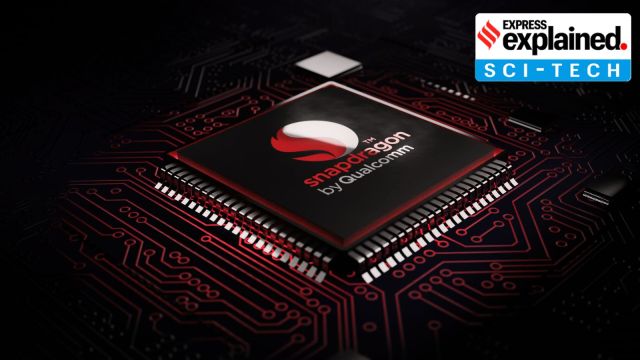How ARM-based chips can revolutionise Windows laptops this year
With the brand new Snapdragon X Elite SoC from Qualcomm, Windows’ thin-and-light laptop lineup is getting the game changer that it has needed for years, especially since the launch of Apple M1 Macbooks.
 Qualcomm claims that its Snapdragon X-Elite SoC can go toe-to-toe with Apple's latest M3 chip. (Pixabay/Representational)
Qualcomm claims that its Snapdragon X-Elite SoC can go toe-to-toe with Apple's latest M3 chip. (Pixabay/Representational)(Written by Tathagata De)
Windows is all set to finally catch up with Apple, when it comes to adopting ARM-based SoCs/chips for its thin-and-light laptop lineup.
A recent benchmarks test run by XDA Developers saw an Asus Zenbook 14 2024 with Intel’s 14th Gen Meteor Lake processors pitted against the ARM-based Snapdragon X Elite SoC from Qualcomm. Qualcomm’s processor significantly outperformed Intel, in single-core, multi-core, and graphics performance — pushing the door open for Windows to make its mark in this segment, dominated by Apple since it launched its revolutionary M1 MacBook in 2020.
We take a closer look.
But first, what is ARM — and how is it better?
Before understanding ARM, one must first understand what SoC, or ‘System on a Chip’, is. In simple terms, SoC is a single integrated chip that includes all the components required to run a whole CPU. In a typical CPU, the processor chip, the RAM, the storage and so on, exist as separate components — all these exist on a single chip in an SoC.
ARM or ‘Advanced RISC Machine’ is the name of a CPU architecture. Now ARM-based SoCs are not new — they have been in use on smartphones for a long time. What they provide, in comparison to the x86, x64, or even Intel’s own x86-64 processors (like the above-mentioned Meteor Lake) is much higher battery efficiency and faster processing.
However, such chips were restricted to smartphones until Apple debuted an ARM-based SoC on its M1 MacBooks, launched in November 2020 — the company called this chip Apple Silicon.
Why was the M1 MacBook revolutionary?
These laptops provided unseen-before battery life and processing efficiency — a measurement of how smoothly an operating system runs, how quickly it opens and closes programs, and read/write speeds.
Why? Apple Silicon or its ARM-based M1 chip, the first in Apple’s M-series. In fact, since 2020, Apple Silicon has only gotten better. Most recently, the tech behemoth came out with the M3 MacBook Pro. Apple claims a 15 per cent increase in performance on M3 chips compared to the last gen M2.
What is the challenge for Windows, when it comes to ARM-based chips?
Crucially, some Windows laptops already offer ARM-based chips. The company came out with an ARM version of Windows (called ‘Windows on ARM’) as far back as 2016. However, till date, there are only a handful of options for Windows laptops with ARM processors.
There exists a glaring problem. When Apple came out with Silicon, developers of MacOS programmes had to put in a lot of work to optimise programmes for revolutionary SoCs. In fact, owing to the sheer number of apps that had to be optimised, early M1 Mac users missed out on many programmes. Windows faces the same problem.
Currently, the only apps that work very well, and show that ARM magic, are the Office Suite (Word, Excel, PowerPoint, etc) and Microsoft Edge. Almost all other necessary programmes that an average Windows user needs, need to be optimised.
So, what’s there to look forward to?
There is hope for Windows users, though. Qualcomm recently announced its brand new Snapdragon X Elite SoC for Windows, which the company claims can go toe-to-toe with Apple’s latest M3 series of chips, in terms of performance.
With the success enjoyed by the chips in early tests, industry experts hope that they signal Windows’ intention to fully, and seriously, adopt this technology for its laptops.
(The author is an intern with The Indian Express)
- 01
- 02
- 03
- 04
- 05





































